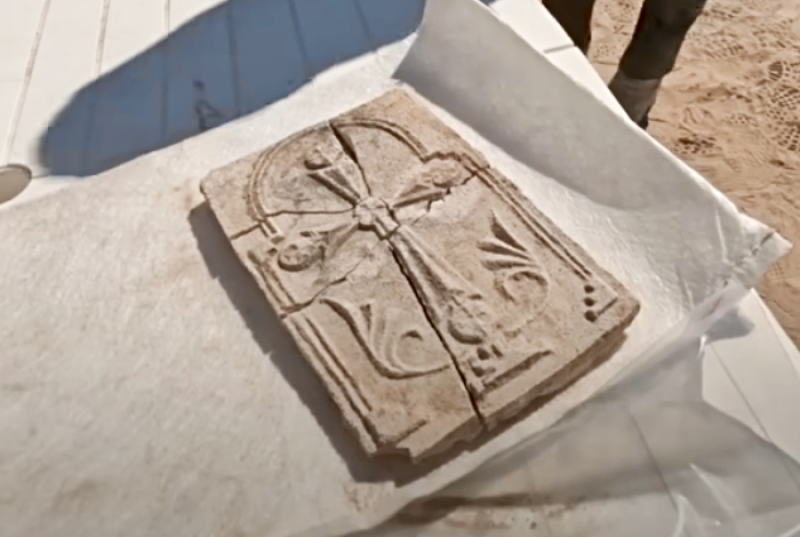
An extraordinary archaeological discovery on Sir Bani Yas Island in Abu Dhabi is significantly reshaping historians’ understanding of the spread of Christianity in the seventh and eighth centuries.
Researchers unearthed a 1,400-year-old plaster plaque depicting a cross within the ruins of an ancient church and monastery. The cross shows a stepped pyramid that resembles Golgotha — the site traditionally believed to be where Jesus was crucified — with foliage emerging from its base.
The discovery suggests that a thriving Christian community existed in the region during a period when Islam was rapidly expanding and pagan traditions remained persistent. Contrary to the long-standing belief that Christianity was declining, evidence indicates that believers in this area were not only present but actually flourishing, according to The National.
Maria Gajewska, the chief archaeologist on the site, explained: “Every element of the cross incorporates regional motifs. It tells us that Christianity in this region was not only present but also flourished, adapting visually to its local context. We had settlements of Christians that were not just existing but were clearly thriving.”
The cross, approximately 27 cm by 17 cm and less than 2 cm thick, is thought to have served as a sacred object, possibly mounted on a wall before which worshippers would pray.
Other artifacts discovered include pottery, glass vessels, and a small sea-green bottle that might have held oil or rosewater.
Hager Al Menhali, an Emirati archaeologist with the Department of Culture and Tourism, remarked that she noticed “a distinct fingerprint on the back” of the plaque, which might have been left by its maker more than a millennium ago.
Mohamed Khalifa Al Mubarak, chairman of the Department of Culture and Tourism, described the find as “a powerful testament to the UAE’s profound and enduring values of coexistence and cultural openness,” emphasizing that it underscores a long history of peaceful religious diversity in the region.
Archaeological evidence indicates that the community on Sir Bani Yas was connected to the Church of the East, a denomination whose influence extended from the Middle East to India and China.
The settlement appears to have been home to high-ranking monks who lived in well-constructed courtyard houses made of limestone and coral, complete with water cisterns.
Signs of Christianity’s presence on the island were first uncovered in the early 1990s. More recently, in 2022, a second monastery was discovered in Umm Al Quwain, and other related sites have been identified in Kuwait, Iran, and Saudi Arabia.



















